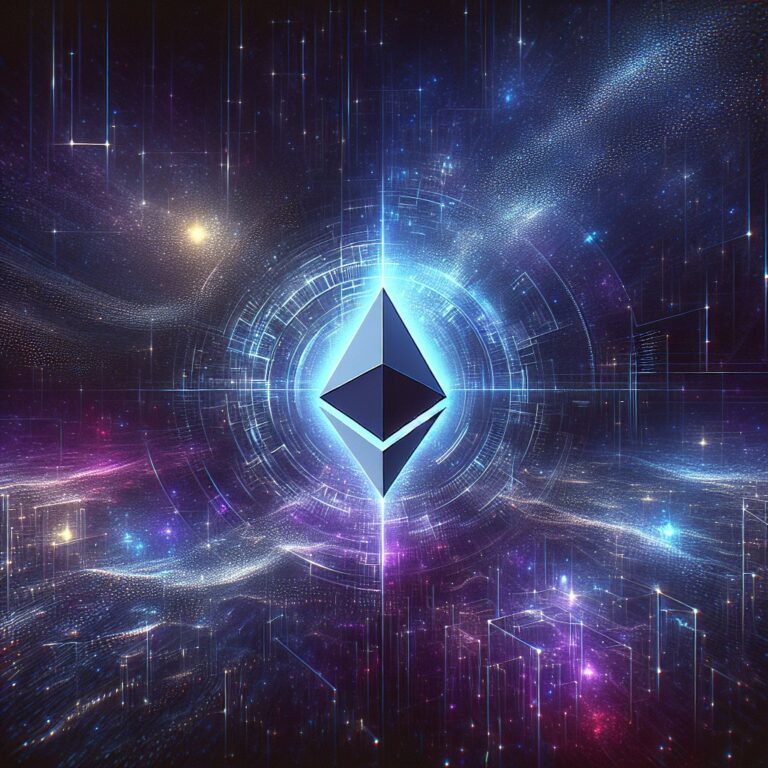Ethereum is once more at the forefront of the crypto space as the on-chain tokenization of real-world assets (RWAs) hits unprecedented heights. On this sunny August 7, 2025, the blockchain giant finds itself steering a burgeoning trend that’s reshaping the digital landscape—driving innovation and raising eyebrows in equal measure.
A Surge in Tokenized Assets
The numbers don’t lie. Recent data reveals that the total value of tokenized RWAs on Ethereum has hit record levels, underscoring the platform’s pivotal role in this evolution. Tokenization, which involves converting physical assets into digital tokens on a blockchain, has been hailed as a revolutionary method to enhance liquidity and accessibility. And Ethereum, with its robust infrastructure and widespread adoption, appears to be the go-to platform for this revolution.
“We’re witnessing a paradigm shift,” notes Sarah Lin, a blockchain analyst at Crypto Insights. “Ethereum’s capacity to facilitate smart contracts and its vast decentralized finance (DeFi) ecosystem make it an ideal candidate for RWA tokenization. It’s no surprise that it’s leading the charge.”
The allure of tokenization lies in its promise to democratize access to assets such as real estate, art, and even fine wines, bringing them to a broader audience. By converting these tangible items into digital tokens, investors can own fractions of high-value assets, potentially transforming how we perceive ownership. This trend is mirrored in initiatives like Credit Agricole’s Asset Servicing Unit’s backing of a tokenized SME exchange in Europe, highlighting the growing institutional interest in tokenization.
Ethereum’s Dominance Explained
So, why is Ethereum at the heart of this surge? It boils down to its versatility and resilience. Since its inception, Ethereum has been synonymous with smart contracts, the self-executing contracts with the terms of the agreement directly written into lines of code. This feature, coupled with its large and active developer community, has made Ethereum a preferred platform for innovative projects.
Adrian Cole, a blockchain strategist at DeFi Exchange, offers insight: “Ethereum’s ecosystem is mature and well-established. Platforms like Polygon and Arbitrum, which operate as layer-2 solutions on Ethereum, have significantly reduced transaction costs and increased scalability, making it even more attractive for tokenizing assets.”
This isn’t to say the journey has been without bumps. Ethereum has faced its fair share of challenges, notably scalability issues and high transaction fees. However, its recent upgrade, known as Ethereum 2.0, aims to address these pain points by transitioning from a proof-of-work to a proof-of-stake consensus mechanism. This shift is expected to enhance efficiency and lower costs, potentially cementing Ethereum’s dominance in the RWA tokenization arena.
The Road Ahead: Opportunities and Challenges
Despite Ethereum’s current standing, the road ahead is fraught with uncertainties. Regulatory hurdles loom large, as governments worldwide grapple with how to oversee and regulate the burgeoning market of tokenized assets. The lack of a consistent regulatory framework raises questions about the long-term viability and stability of this market.
Moreover, technological advancements in other blockchain platforms could pose a threat to Ethereum’s hegemony. Up-and-coming networks like Solana and Cardano are nipping at its heels, offering faster and cheaper transactions. The crypto ecosystem is notoriously dynamic, and Ethereum will need to innovate continually to maintain its edge. The strategic moves by companies like Centrifuge, which recently appointed a former Goldman Sachs executive as COO, as detailed in our coverage, underscore the competitive landscape Ethereum must navigate.
Still, the potential rewards are enticing. The tokenization of RWAs could unlock trillions of dollars in value, opening new avenues for investment and financial inclusion. For investors, the ability to own a fraction of a Picasso or a luxury apartment in Paris is no longer a pipe dream but a tangible possibility.
Conclusion: The Unfolding Story
As we stand on the brink of a new financial era, Ethereum’s role in the tokenization of real-world assets is a story that’s still unfolding. The implications of this trend are vast and varied, touching on finance, technology, and even our understanding of ownership itself.
Yet, with great potential comes great responsibility. The crypto community will need to navigate regulatory waters carefully, address technological challenges, and continue to educate the public about the benefits and risks of tokenized assets.
One thing is certain: Ethereum’s journey in the realm of RWA tokenization is far from over. As the market evolves, so too will the stories and opportunities that emerge. And for those watching closely, it’s a tale worth following.
Source
This article is based on: Ethereum in the Driving Seat as On-Chain RWA Tokenization Nears Peak Levels
Further Reading
Deepen your understanding with these related articles:
- Coinbase Pushes Toward ‘Everything Exchange’ with Bitcoin Buy and Tokenized Assets
- Coinbase ‘Everything Exchange’ to Offer Tokenized Stocks & Boost Bitcoin Hyper
- The Next Big Crypto Bet: Why Tom Lee Says Ethereum Holds the Key

Steve Gregory is a lawyer in the United States who specializes in licensing for cryptocurrency companies and products. Steve began his career as an attorney in 2015 but made the switch to working in cryptocurrency full time shortly after joining the original team at Gemini Trust Company, an early cryptocurrency exchange based in New York City. Steve then joined CEX.io and was able to launch their regulated US-based cryptocurrency. Steve then went on to become the CEO at currency.com when he ran for four years and was able to lead currency.com to being fully acquired in 2025.


